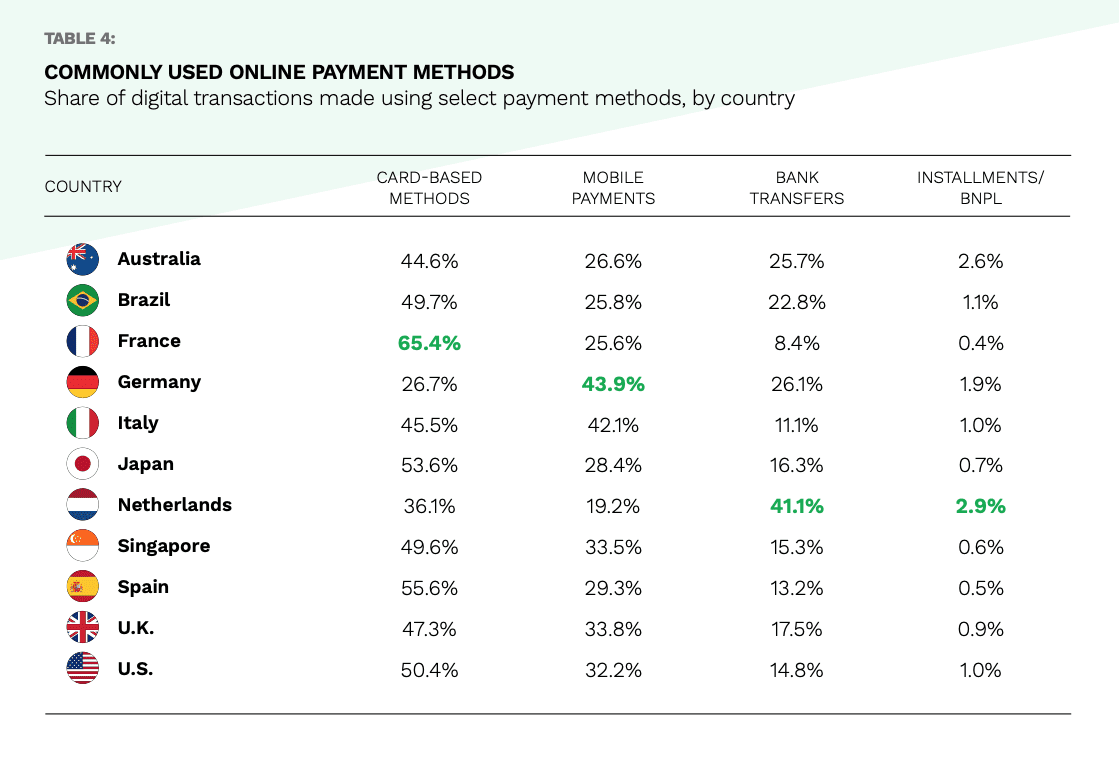Few trends are truly global in scope — seismic shifts in behavior that transcend borders and languages.
The digital transformation of payments can indeed be termed “global.”
Borne from necessity during the pandemic, but firmly rooted in convenience and choice, mobile payments and flexible payment options are gaining ground, and perhaps reaching a tipping point in several developed economies, as card-based payments open the door for wider-spread use of alternative payments.
In the study “Benchmarking the World’s Digital Transformation,” 15,100 individuals across 11 countries relayed to PYMNTS and Stripe that they are increasingly comfortable embracing digital experiences across the 10 pillars that comprise the connected economy. Those pillars are tied to everything from tech-enabled ways to have fun to how we get our food (delivered to the doorstep, for so many of us).
Read also: New 11-Country Study Shows Digital Transformation Has Reached Only 27% of Full Potential
At the center of it all are new ways to pay for the goods and services that are increasingly in demand as various economies reopen across the world. The survey of 11 countries — responsible for half the world’s GDP — indicates that the digital payments pivot been a complete sweep. But tipping points loom, and they seem pretty close, where digital transactions may represent a significant majority of payments volume and value.
Advertisement: Scroll to Continue
As to the “older” ways of doing things, cash still has at least some presence for in-store transactions. That entrenchment shows up most notably in Germany, where bills and coins — and checks! — account for nearly 38% of payments, followed by a bit more than 31% in Italy. The percentage of cash-based in store transactions dips to 20% in the U.S. By and large, card transactions remained the most widely used by consumers across all 11 countries, with 55% of in-store and 49% of digital transactions.

Of the digital payments not using cards, more than 60% of those transactions came through digital wallets — which indicates just how quickly we’re seeing consumers wield their mobile devices at the register or in the aisles to buy what they need. Mobile payments adoption, at least in-store, has a low teens percentage point adoption, depending on where you look, topping out at 22% in Singapore.
Interestingly, it is in Germany — the very nation that is decidedly most “cash” based (see above) — where we see a strong preference for digital wallets, tied to 44% of all online transactions (see the chart below), and where 83% of those transactions use PayPal.
Now, granted, this is but one country, but it offers a microcosm of the trends taking shape: Cash has its place in the economy; but for those ready to make digital payments online, the leap is made whole-heartedly, and wallet adoption is significant.
Moving Online
Moving beyond in-store payments to commerce as a whole — and to online commerce, the seismic shift becomes even more pronounced. Cards are still out in force, the most prevalent method of payment at checkout. But they are not the majority. Mobile payments have found favor with consumers, generally representing a quarter to a third of transactions.
There still remains fertile ground for buy now, pay later (BNPL), which has yet to crack the low single digit percentage points in our 11-country study.

Across various pillars — this is the connected economy, after all — the digital transformation shows that transactional activities (as measured by an Index “score”) are most firmly rooted in banking and shopping on marketplaces. But they also have a place in leisure and in health (such as virtual therapy appointments).

Overall, we found that the digital transformation — which includes payments, but refers to a more holistic digital engagement — has reached only 27% of its potential. The implication here, then, is that things are just getting started, and around the world, digital wallets and BNPL will be part of tailwinds that increase digital engagement.

